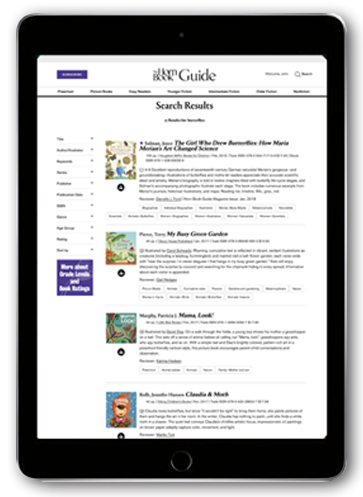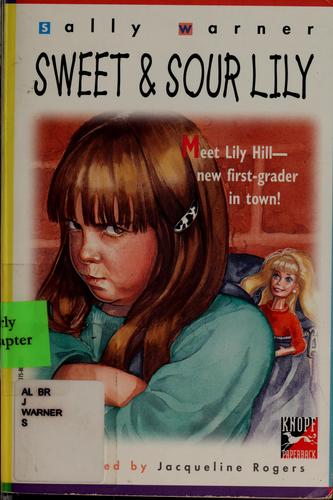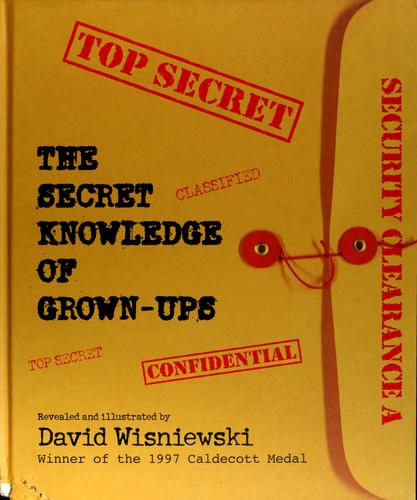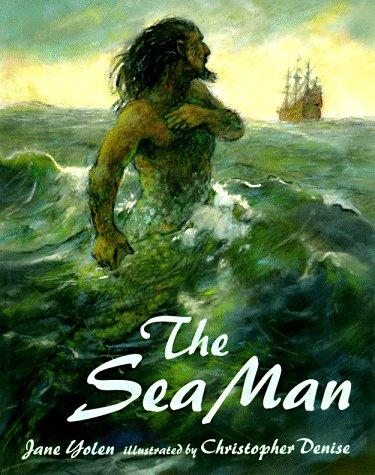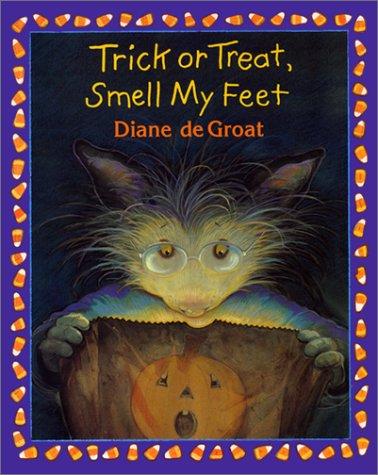Related
2,976 Reviews
(3)
1-3
Illustrated by
Phil Boatwright.
An early-nineteenth-century family moves from New York to what is now central Ohio and struggles to make a home in the dense forest. The clear, informative text and evocative illustrations combine to provide lots of opportunities for discussion about life in a long-ago era.
Reviewer: Amy Lois Cohn
(3)
K-3
A loon at dawn, an eagle at noon, a wolf at night--an Ojibway grandfather and grandson encounter these animals in this smoothly written story about a modern-day Native family's wilderness outing. Realistic illustrations capture the closeness of the intergenerational relationship and the quiet beauty of nature. Intricate renderings of traditional Ojibway beadwork complement the text.
Reviewer: The Horn Book, Inc.
(3)
1-3
Illustrated by
Jacqueline Rogers.
Lily's father has been sent to jail, and her family has moved into a small apartment, leaving six-year-old Lily with a lot of changes to get used to--a missing father, starting a new school, sharing a bedroom with her mother. Lily is a sympathetic narrator, and the short novels are involving, realistic, sometimes funny portraits of a family going through a particularly stressful period.
Reviewer: Maeve Visser Knoth
(3)
1-3
Illustrated by
Jacqueline Rogers.
Lily's father has been sent to jail, and her family has moved into a small apartment, leaving six-year-old Lily with a lot of changes to get used to--a missing father, starting a new school, sharing a bedroom with her mother. Lily is a sympathetic narrator, and the short novels are involving, realistic, sometimes funny portraits of a family going through a particularly stressful period.
Reviewer: Maeve Visser Knoth
(2)
1-3
Illustrated by
Robin Preiss Glasser.
In this wordless book, a girl leaves her balloon with a guard before entering the museum. When the balloon sails away, the guard takes off in pursuit. As a series of chaotic scenes around Manhattan follow, the action is reflected in the works of art the girl is viewing inside the museum. Funny and elegant at the same time--thanks to a remarkably evocative line, a sure sense of timing, and variations in perspective and layout.
Reviewer: Mary M. Burns
| Horn Book Magazine Issue:
November, 1998
(3)
1-3
Illustrated by
Robert J. Blake.
On Christmas Eve a little girl waits with her family for Uncle Ambrose, who is disabled, to make it home through a terrible snowstorm. He finally arrives, helped by an enormous black dog that he believes is his guardian angel. While the text tells of the girl's worries, the illustrations show Uncle Ambrose struggling along and being rescued. The art and text both present a satisfying holiday story.
Reviewer: Maeve Visser Knoth
(3)
1-3
Illustrated by
Nick Sharratt.
In these laugh-out-loud chapter books, irrepressible third-grader Joey (Spider) Storch finds trouble on a field trip to the science museum and in Music for Beginners class--instead of the tuba, he's assigned to play the flute. Fast-paced stories, dead-on dialogue, and hip, good-humored black-and-white line illustrations make for two winning reads.
Reviewer: Jackie C. Horne
(3)
1-3
Illustrated by
Nick Sharratt.
In these laugh-out-loud chapter books, irrepressible third-grader Joey (Spider) Storch finds trouble on a field trip to the science museum and in Music for Beginners class--instead of the tuba, he's assigned to play the flute. Fast-paced stories, dead-on dialogue, and hip, good-humored black-and-white line illustrations make for two winning reads.
Reviewer: Jackie C. Horne
(3)
K-3
Detective Wisniewski comes to the aid of children everywhere by revealing the truth behind adult rules. For example, the real reason adults tell kids not to jump on their beds is because it might wake up the mattresses, which are "active woolly creatures raised on farms in Scotland." The humor is sophomoric, and Wisniewski's cut-paper collage does justice to his vicious broccoli and atomic cows.
Reviewer: The Horn Book, Inc.
(3)
K-3
In a picture book for older readers, Keara, an Irish immigrant, and Stefan, a Polish immigrant, live at opposite ends of a dreary nineteenth-century mining town. As children, following their families' warnings, they each shun the other ethnic group; but as young adults, they meet and fall in love--to the horror of both families. Soot-filled ink and watercolor illustrations accompany this look at how prejudices grow, and how they can be overcome.
Reviewer: The Horn Book, Inc.
(3)
1-3
Illustrated by
Bernie Fuchs.
In this story about the barn raising that follows a destructive fire, Yolen's text, rich with metaphor, captures the spirit of community that flourishes among the Amish. Eight-year-old Matthew, the narrator, hopes that Papa will consider him big enough to help. The expressive oil paintings offer compelling images of the farm and the Amish people. Author's note appended.
Reviewer: Anne St. John
(3)
1-3
Illustrated by
Bruce Degen.
Commander Toad rides again! This time, while on a journey home, he and his crew intercept an uncharted planet. This new tale of the Star Warts bunch has some fine use of language as well as silly word play. The adventure is just right for the almost-reading set. Black-and-white drawings accompany the story.
Reviewer: Elizabeth S. Watson
(3)
K-3
In this version of Andersen's "The Emperor's New Clothes," the new suit still leaves nothing to the imagination, but the vain emperor, the crafty tailors, and the loyal subjects are all frogs. Lots of amphibian details ("Eat your flies") and humorous pen-and-ink and watercolor illustrations (dominated by shades of green) make this a lighthearted, satisfying retelling.
Reviewer: The Horn Book, Inc.
(4)
K-3
When the crew of a Dutch ship haul in a sea creature that is half man, half fish in this old-fashioned story, the lieutenant finds his belief that science can explain all natural phenomena seriously challenged. While the superstitious crew plot to kill the creature, the lieutenant makes a compassionate decision to return it to the sea. His reward is the merman's lifelong guidance and friendship. Black-and-white drawings illustrate the sentimental fantasy.
Reviewer: The Horn Book, Inc.
(3)
1-3
Beni's First Chanukah (1988), Happy Passover, Rosie (1990, review 3/90), Leo and Blossom's Sukkah (1990), Goldie's Purim (1991), and Happy New Year, Beni (1993) are collected here in one volume. Beni and his extended bear family celebrate five holidays in these stories. The folksy paintings have an old-fashioned feel, which lends itself to the traditions that form the backdrop for the text. Glos.
Reviewer: Suzy Schmidt
(2)
1-3
The day of the school Halloween parade, Gilbert realizes he's grabbed the bag containing his sister's pink ballerina costume by mistake. De Groat's portrayals of Gilbert (the porcupine from Roses Are Pink, Your Feet Really Stink) and his classmates are relaxed and uninhibited. Despite the somewhat contrived story, Gilbert's good-natured blunderings make for a kid-appealing Halloween treat.
Reviewer: Mary Burkey
| Horn Book Magazine Issue:
September, 1998
2,976 reviews
We are currently offering this content for free. Sign up now to activate your personal profile, where you can save articles for future viewing.
